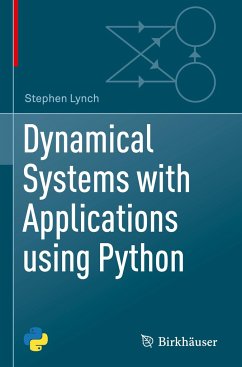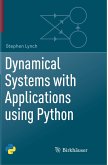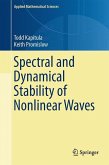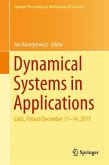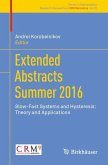This textbook provides a broad introduction to continuous and discrete dynamical systems. With its hands-on approach, the text leads the reader from basic theory to recently published research material in nonlinear ordinary differential equations, nonlinear optics, multifractals, neural networks, and binary oscillator computing. Dynamical Systems with Applications Using Python takes advantage of Python's extensive visualization, simulation, and algorithmic tools to study those topics in nonlinear dynamical systems through numerical algorithms and generated diagrams.
After a tutorial introduction to Python, the first part of the book deals with continuous systems using differential equations, including both ordinary and delay differential equations. The second part of the book deals with discrete dynamical systems and progresses to the study of both continuous and discrete systems in contexts like chaos control and synchronization, neural networks, and binary oscillator computing. These later sections are useful reference material for undergraduate student projects. The book is rounded off with example coursework to challenge students' programming abilities and Python-based exam questions.
This book will appeal to advanced undergraduate and graduate students, applied mathematicians, engineers, and researchers in a range of disciplines, such as biology, chemistry, computing, economics, and physics. Since it provides a survey of dynamical systems, a familiarity with linear algebra, real and complex analysis, calculus, and ordinary differential equations is necessary, and knowledge of a programming language like C or Java is beneficial but not essential.
After a tutorial introduction to Python, the first part of the book deals with continuous systems using differential equations, including both ordinary and delay differential equations. The second part of the book deals with discrete dynamical systems and progresses to the study of both continuous and discrete systems in contexts like chaos control and synchronization, neural networks, and binary oscillator computing. These later sections are useful reference material for undergraduate student projects. The book is rounded off with example coursework to challenge students' programming abilities and Python-based exam questions.
This book will appeal to advanced undergraduate and graduate students, applied mathematicians, engineers, and researchers in a range of disciplines, such as biology, chemistry, computing, economics, and physics. Since it provides a survey of dynamical systems, a familiarity with linear algebra, real and complex analysis, calculus, and ordinary differential equations is necessary, and knowledge of a programming language like C or Java is beneficial but not essential.
"Lynch has successfully captured this: I find this book to be uniquely successful in teaching a branch of mathematics together with computing while inspiring students to look at references and explorations beyond the text." (Patrick Shipman, SIAM Review, Vol. 62 (2), 2020)
"This book is meant as an upper level undergraduate or graduate text in dynamical systems. ... this is an attractive text, one that I wish I had access to when I was learning dynamical systems, and one that I would be glad to teach from." (John Starrett, MAA Reviews, July 28, 2019)
"This book is meant as an upper level undergraduate or graduate text in dynamical systems. ... this is an attractive text, one that I wish I had access to when I was learning dynamical systems, and one that I would be glad to teach from." (John Starrett, MAA Reviews, July 28, 2019)

